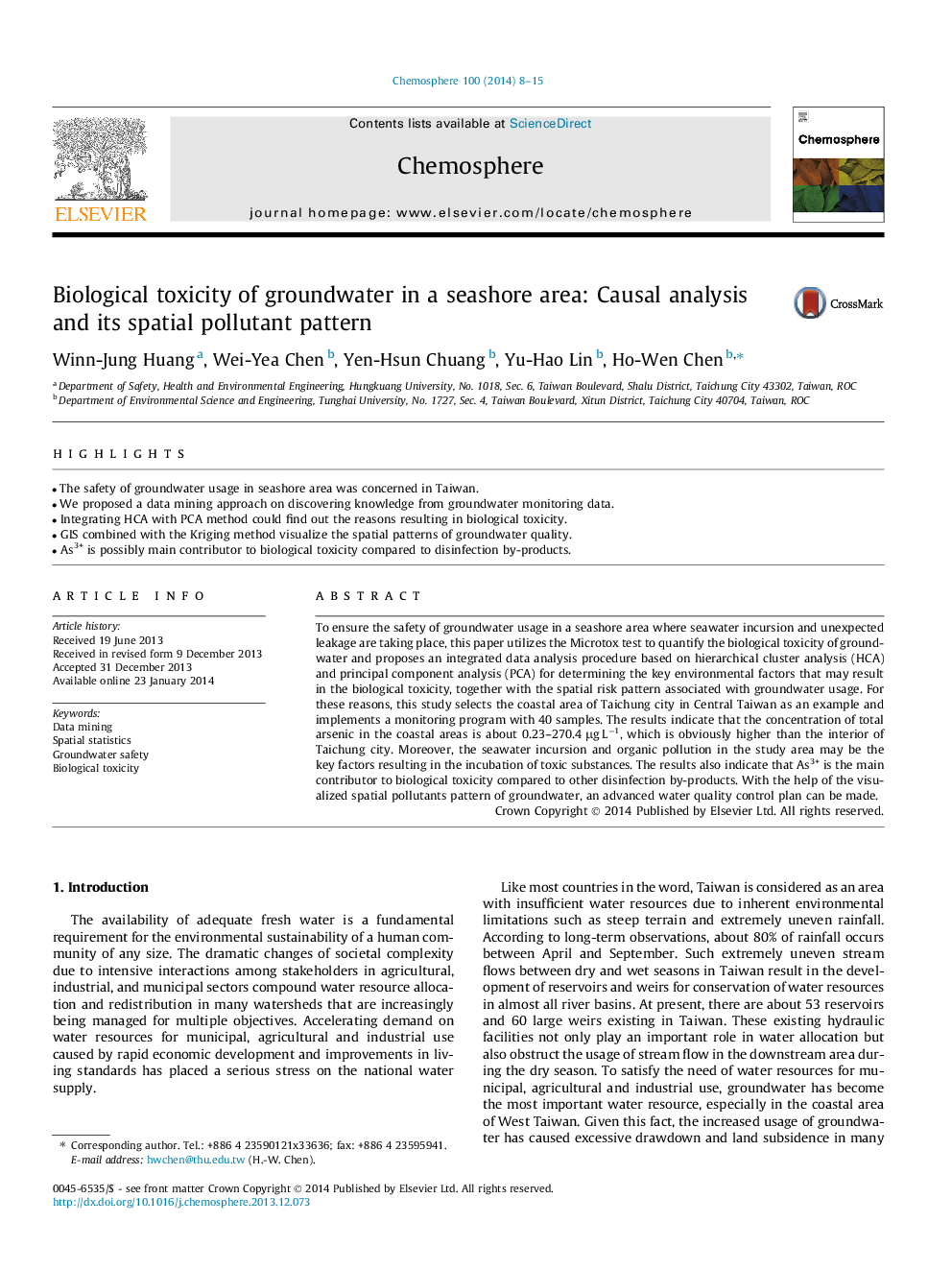| Article ID | Journal | Published Year | Pages | File Type |
|---|---|---|---|---|
| 6309449 | Chemosphere | 2014 | 8 Pages |
â¢The safety of groundwater usage in seashore area was concerned in Taiwan.â¢We proposed a data mining approach on discovering knowledge from groundwater monitoring data.â¢Integrating HCA with PCA method could find out the reasons resulting in biological toxicity.â¢GIS combined with the Kriging method visualize the spatial patterns of groundwater quality.â¢As3+ is possibly main contributor to biological toxicity compared to disinfection by-products.
To ensure the safety of groundwater usage in a seashore area where seawater incursion and unexpected leakage are taking place, this paper utilizes the Microtox test to quantify the biological toxicity of groundwater and proposes an integrated data analysis procedure based on hierarchical cluster analysis (HCA) and principal component analysis (PCA) for determining the key environmental factors that may result in the biological toxicity, together with the spatial risk pattern associated with groundwater usage. For these reasons, this study selects the coastal area of Taichung city in Central Taiwan as an example and implements a monitoring program with 40 samples. The results indicate that the concentration of total arsenic in the coastal areas is about 0.23-270.4 μg Lâ1, which is obviously higher than the interior of Taichung city. Moreover, the seawater incursion and organic pollution in the study area may be the key factors resulting in the incubation of toxic substances. The results also indicate that As3+ is the main contributor to biological toxicity compared to other disinfection by-products. With the help of the visualized spatial pollutants pattern of groundwater, an advanced water quality control plan can be made.
